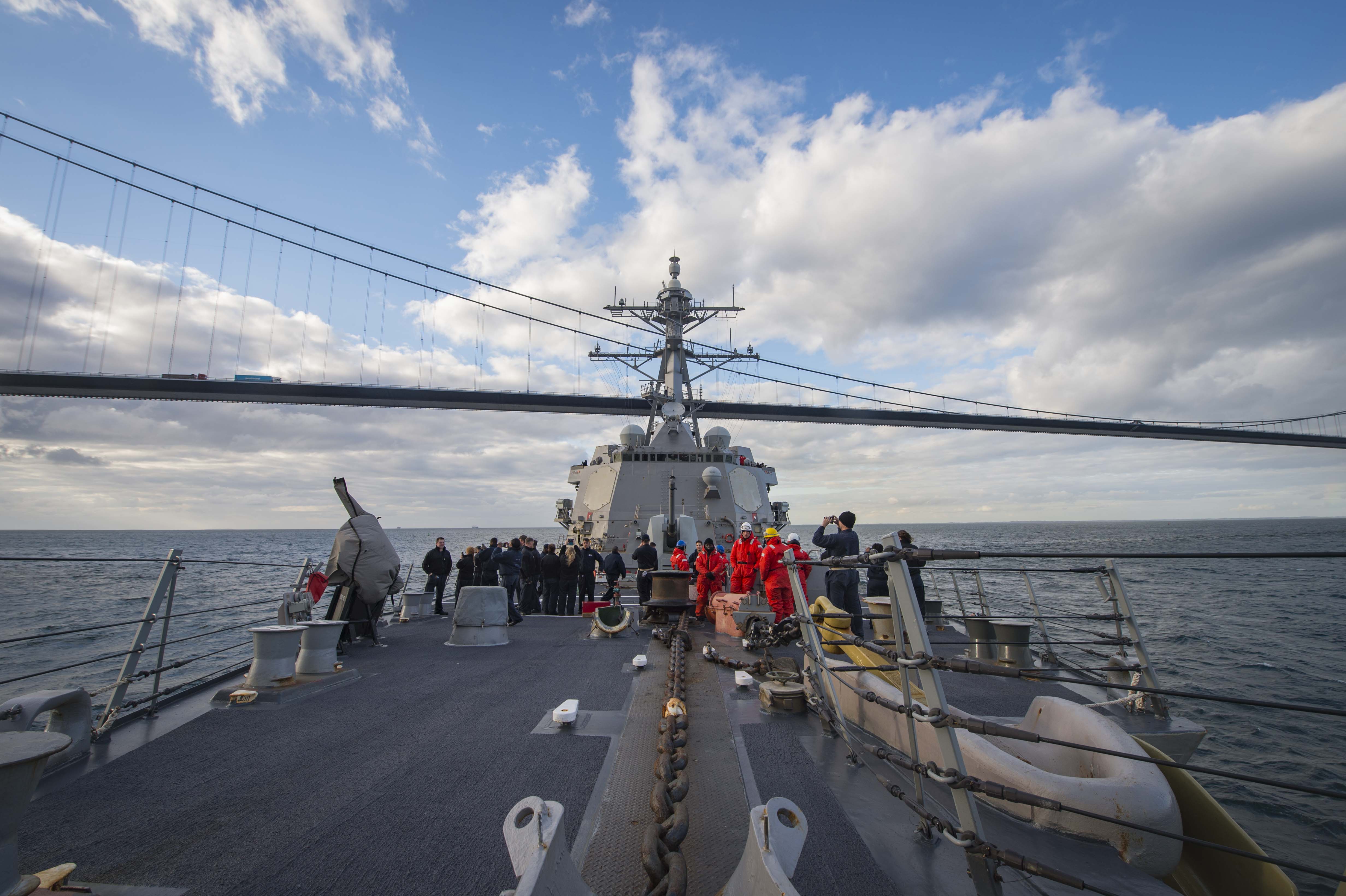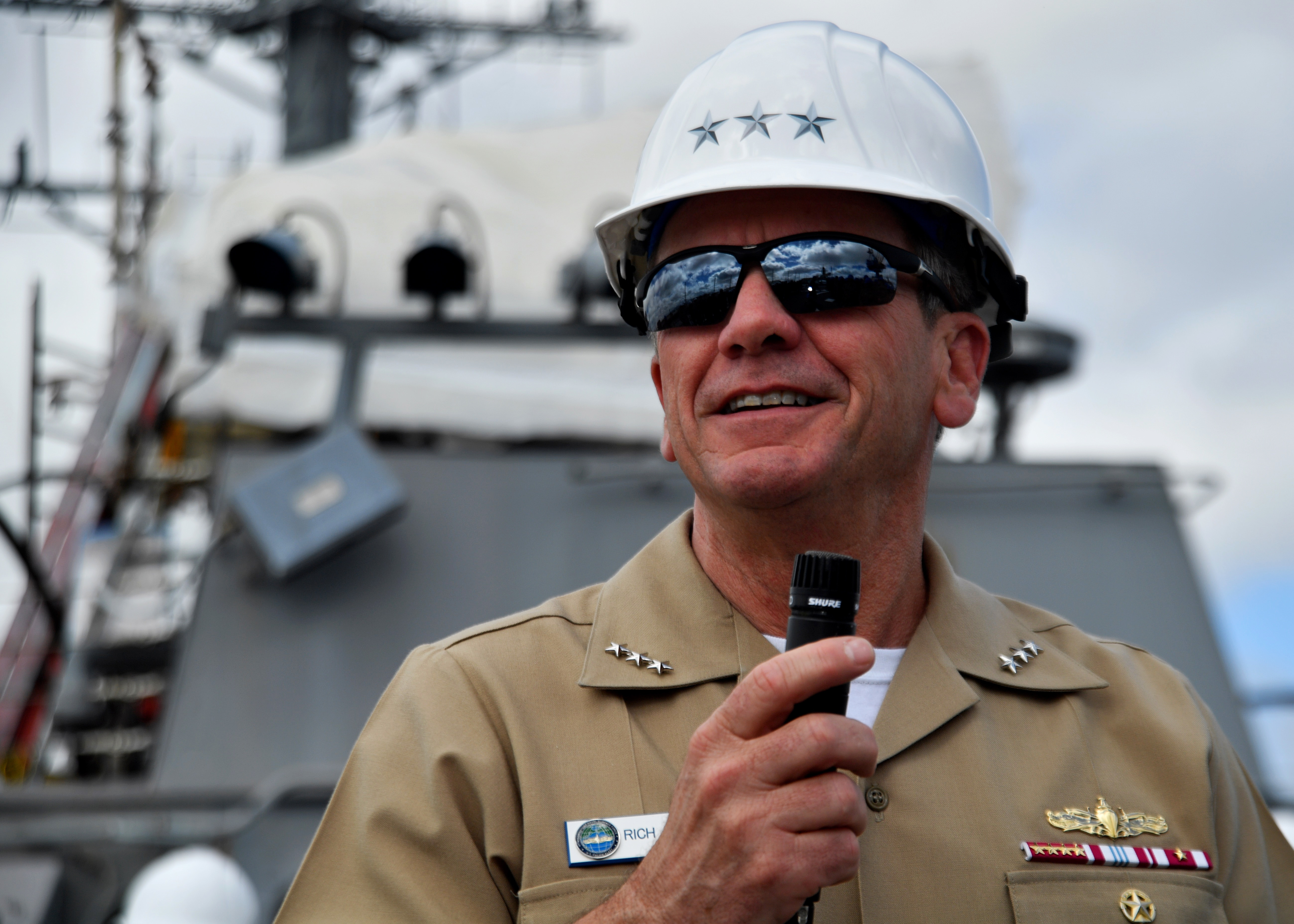
A comprehensive test of seamanship skills of 164 junior surface warfare officers found an alarming lack of basic navigation and ship handling knowledge, according to a message sent from the head of U.S. Navy surface forces and obtained by USNI News.
The June 4 message from Vice Adm. Richard Brown to leaders throughout the service outlined the results of a battery of “competency checks” on junior officers who were qualified to stand officer of the deck watch at seven fleet concentration areas. The Surface Warfare Officer School (SWOS) gave an experience survey, a maritime “rules of the road” written exam and a 35-minute low-to-moderate-traffic navigation scenario graded by former warship commanders.
“The results were sobering,” Brown wrote. “Of the 164 officers assessed, only 27 Completed No Concerns, 108 Completed Some Concerns and 29 had Significant Concerns. In short, this confirms we have work to do.”
Defense News first reported the results of the memo on Tuesday.
Chief among the lapses for OOD-qualified sailors was a lack understanding of the navigation radars on U.S. warships. Failure to understand the radar picture was a key factor in the June 2017 collision of USS Fitzgerald (DDG-62) off Japan and the 2012 collision between a merchant oiler and USS Porter (DDG-78) in the Strait of Hormuz, according to reports from both collisions.
Following the collisions of Fitzgerald and USS John S. McCain (DDG-56) last year, the Navy expanded the radar course at the Basic Division Officer Course from two to 11 hours. Based on the results of the surveys, Brown said he intended to further expand radar and automatic radar plotting aid (ARPA) training in all levels of surface officer schools.
The study also found that the practical application of the maritime rules of the road was a deficiency in the junior officers quizzed. While 91 percent passed the written test, “more than half of the officers assessed struggled to correctly apply rules of the road during encounters in the scenario,” Brown wrote.
“I have asked SWOS to take a fresh look at the way that we instruct rules of the road,” Brown wrote. “I again require you to review your officer training and ensure we are not simply training to the test. Instead, talk about and game out actual encounters at sea in order to build critical thinking and decision making skills.”

Lastly, the junior officers struggled with what to do when presented with a near-collision scenario.
“While most of the 164 officers assessed were able to avoid near collision situations, those that found themselves in extremis were often ill-equipped to take immediate action to avoid collision,” Brown wrote.
News of the study comes as the Navy and Congress work competing ideas on how to shore up the problems that led to last year’s collisions in the surface force. Led by Vice Chief of Naval Operations Adm. Bill Moran, the Navy is working through a list of more than 100 recommendations derived from the two studies undertaken to determine the root causes of the of fatal collisions in the Western Pacific. The Navy has already changed the way it deploys forces in the region and modified sleep schedules to ease tensions aboard warships.
In the Senate, Sens. Roger Wicker (R-Miss.) and John McCain (R-Ariz.) introduced a series of legislative measures called the Surface Warfare Enhancement Act of 2018. To address the problem of junior officer training, the legislation called for new officers destined for surface ships to have time underway on Navy Yard Patrol Craft (YP) as part of the training at BDOC.
In the House, Rep. Rob Wittman (R-Va.) is calling for some surface Navy officers training to be based on the civilian International Convention on Standards of Training, Certification and Watchkeeping for Seafarers (STCW).
“We want there to be a comparable standard there,” he told USNI News last month.
“We think that’s important.”
Wittman also wants to create two career paths for surface warfare officers: ship engineering systems, and ship operations and combat systems. The move would be a major change from the generalist path the Navy has used for decades.
For Brown, the study served as a wake-up call for changes the surface community needs to make to rectify the known deficiencies.
“We must be realistic in confronting the systemic shortfalls that they revealed in core proficiencies across the junior qualified members of the force. We as a community can and must tackle our deficiencies and ensure there is meaningful experience behind our qualification letters,” Brown wrote.
“While we have work to do, I am comforted by the exceptional motivation and hunger to learn displayed by the 164 Junior Officers that were assessed, regardless of performance. I have every confidence in our current generation of Junior Officers. We owe them the training and tools necessary to become expert mariners.





